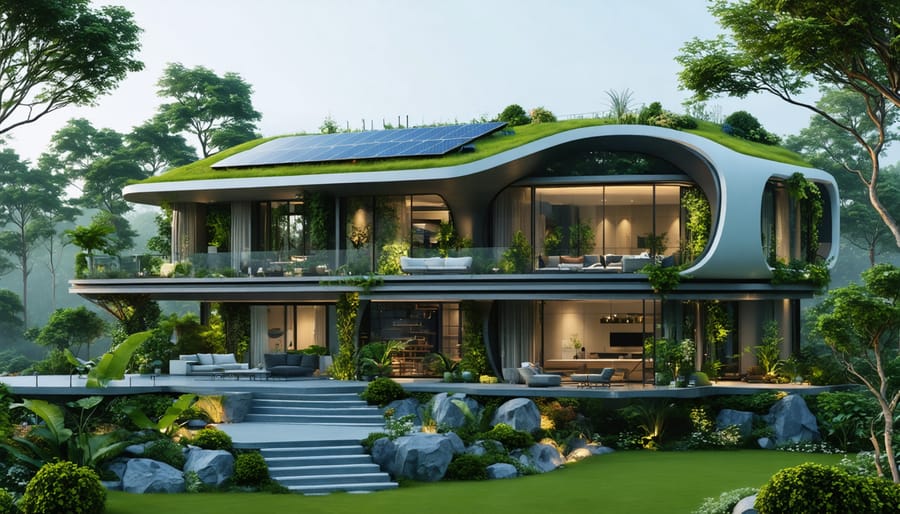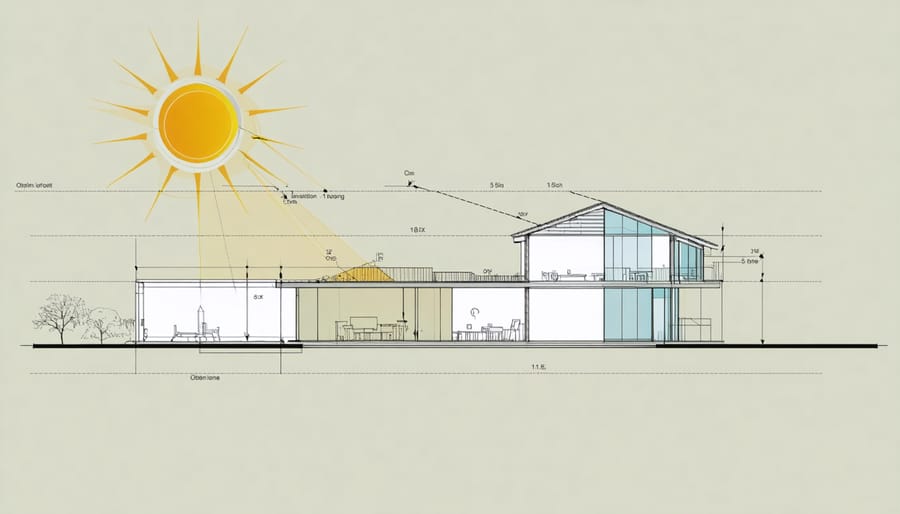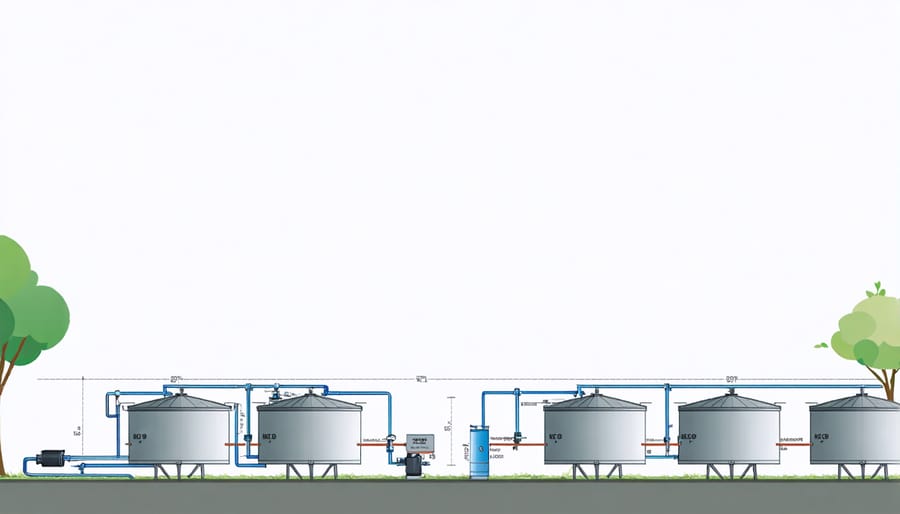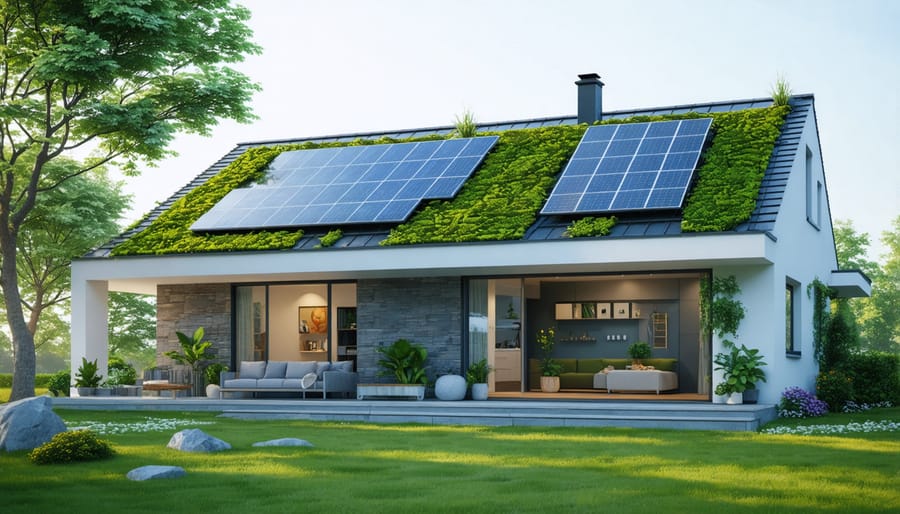
Build Your Dream Eco-Home: Smart Design Choices That Save Money and the Planet
Transform your living space into a sustainable sanctuary that benefits both the environment and your wallet. As climate concerns grow and energy costs rise, eco-friendly home design has evolved from a trendy concept to an essential approach for modern living. Today’s green homes combine cutting-edge technology with time-tested sustainable practices, offering solutions that reduce carbon footprints while creating comfortable, healthy living environments.
Smart eco-friendly design goes beyond solar panels and recycled materials – it’s about creating an integrated system where every element works together to maximize efficiency and minimize environmental impact. From passive solar orientation and natural ventilation to advanced insulation techniques and water conservation systems, modern sustainable homes prove that environmental responsibility doesn’t mean sacrificing comfort or style.
Whether you’re planning a new build or retrofitting an existing home, incorporating eco-friendly design principles can reduce your energy consumption by up to 70% while increasing your property’s value. This comprehensive guide explores the essential elements of sustainable home design, combining traditional wisdom with innovative solutions to create houses that work in harmony with nature.
Let’s dive into the key strategies and features that make a truly sustainable home, focusing on practical solutions that deliver real environmental and financial benefits.

Smart Orientation and Natural Climate Control
Solar Positioning and Window Placement
Strategic window placement is one of the most effective ways to make your home more energy-efficient and comfortable throughout the year. South-facing windows are your best friends in eco-friendly design, as they capture maximum sunlight during winter months when the sun sits lower in the sky. This natural solar gain can significantly reduce heating costs during colder seasons.
To optimize solar benefits, consider installing larger windows on your home’s southern face, while keeping windows on the eastern and western sides moderately sized. North-facing windows should be smaller to minimize heat loss. For summer comfort, incorporate adjustable shading solutions like awnings or deciduous trees that provide shade during hot months but allow sunlight through in winter.
The placement height of your windows matters too. High windows can help funnel warm air out during summer, creating natural ventilation, while strategically placed lower windows can help direct cool breezes through your living spaces. Consider double-pane or triple-pane windows with low-E coatings to maintain better temperature control.
For maximum benefit, aim to have your main living areas facing south, where they can take advantage of natural light throughout the day. This reduces the need for artificial lighting and heating, leading to lower energy bills and a smaller carbon footprint. Remember to consider your local climate and the specific angles of seasonal sun paths when planning window placement.
Natural Ventilation Systems
Natural ventilation is one of the most cost-effective ways to make your home more eco-friendly while reducing energy bills. By strategically designing your home to maximize airflow, you can significantly decrease your reliance on artificial heating and cooling systems. Start by positioning windows on opposite sides of your home to create cross-ventilation, allowing cool breezes to flow naturally through your living spaces.
Consider installing operable clerestory windows or skylights to take advantage of the stack effect, where warm air naturally rises and escapes through upper openings while drawing in cooler air through lower windows. Incorporating proper attic ventilation solutions can help regulate your home’s temperature year-round.
Think about your local climate when planning window placement. In warmer regions, position larger windows on the north and south faces to minimize direct sun exposure, while homes in cooler climates might benefit from more east-west orientations. Adding features like window awnings, pergolas, or deciduous trees can provide seasonal shade while still allowing for optimal airflow.
Smart ventilation features like automated window systems can adjust to weather conditions, opening and closing at optimal times to maintain comfortable indoor temperatures. Installing ceiling fans in key areas complements natural ventilation by improving air circulation without the energy demands of air conditioning.
Sustainable Building Materials
Recycled and Renewable Materials
When building an eco-friendly house, choosing sustainable materials is crucial for reducing environmental impact. Reclaimed wood stands out as a popular choice, offering both character and sustainability. Salvaged from old buildings, barns, or industrial sites, this material brings unique charm while preventing new tree harvesting.
Bamboo has emerged as a fantastic renewable alternative to traditional hardwoods. Growing up to 30 times faster than traditional trees, bamboo provides excellent durability and a modern aesthetic. For walls and insulation, recycled steel proves incredibly effective – most of it comes from old vehicles and appliances, requiring significantly less energy to process than new steel production.
Cork flooring offers another sustainable option, harvested from cork oak trees without harming them. It’s naturally antimicrobial, comfortable underfoot, and regenerates every nine years. Recycled glass tiles and countertops create stunning visual elements while putting waste materials to good use.
For exterior applications, consider fiber cement siding made from recycled materials. It’s extremely durable, low-maintenance, and resistant to weather damage. Recycled plastic lumber works well for decking and outdoor structures, offering the look of wood without maintenance concerns or environmental impact.
Natural insulation materials like recycled denim, sheep’s wool, or cellulose (made from recycled paper) provide excellent thermal performance while keeping materials out of landfills. These options are non-toxic and safe to handle during installation.
Remember to look for materials with high recycled content and those certified by recognized environmental organizations. Local sourcing helps reduce transportation emissions and supports your community’s economy while ensuring materials are appropriate for your climate zone.

Insulation Solutions
Proper insulation is a cornerstone of eco-friendly home design, playing a crucial role in energy efficiency and comfort. Today’s market offers several sustainable insulation options that are both effective and environmentally responsible.
Natural sheep’s wool is gaining popularity as an excellent insulation choice. It’s renewable, biodegradable, and naturally fire-resistant. This material also excels at moisture management, helping prevent mold while maintaining consistent indoor temperatures.
Recycled denim insulation, made from post-consumer blue jeans, offers similar performance to traditional fiberglass but without harmful chemicals. It’s safe to handle and install, making it perfect for DIY projects. Plus, it helps keep textile waste out of landfills.
Cellulose insulation, created from recycled paper products, is another eco-friendly option. It’s treated with non-toxic borate compounds for fire and pest resistance, and can be blown into existing walls, making it ideal for retrofitting projects. This material has one of the highest recycled content percentages of any insulation product.
Cork insulation provides excellent thermal and acoustic properties while being completely natural and renewable. Harvested from cork oak trees without harming them, it’s particularly effective in areas prone to moisture.
For those seeking cutting-edge solutions, aerogel insulation offers superior performance with minimal thickness. Though currently more expensive, it’s incredibly effective and requires less material overall.
When selecting insulation, consider the R-value (insulating power), local climate conditions, and installation requirements. The right choice can reduce heating and cooling costs by up to 50% while significantly decreasing your home’s carbon footprint.
Water Conservation Design
Rainwater Harvesting Systems
Rainwater harvesting is one of the smartest investments you can make for an eco-friendly home, helping you reduce water bills while protecting our precious water resources. The system starts with your roof, which acts as a natural collection surface, channeling rainwater into gutters and downspouts.
The heart of any rainwater harvesting system is the storage tank, which can range from simple 50-gallon barrels to underground cisterns holding thousands of gallons. For most homes, a 1,500-2,500 gallon tank provides adequate storage for garden irrigation and non-potable household uses.
To ensure clean water collection, install mesh screens over gutters to filter out leaves and debris, and include a first-flush diverter to remove initial roof runoff containing dust and bird droppings. The collected water passes through additional filters before entering the storage tank.
Consider installing a dual plumbing system that allows rainwater use for toilets, washing machines, and outdoor irrigation. Modern systems can include automated controls that switch to municipal water when rainwater reserves are low.
For DIY enthusiasts, starting with a simple rain barrel system is an excellent way to test the waters. You can gradually expand your setup as you become more comfortable with the technology. Remember to check local regulations regarding rainwater collection, as requirements vary by region.

Grey Water Systems
Grey water systems offer an ingenious way to reduce water consumption by reusing household water from sinks, showers, and washing machines for garden irrigation and toilet flushing. This sustainable approach can cut your water bills by up to 50% while helping preserve precious freshwater resources.
Setting up a basic grey water system can be surprisingly straightforward. The simplest method involves redirecting water from your washing machine to your garden using food-safe hoses and a three-way valve. For more comprehensive systems, you can collect water from bathroom sinks and showers, filter it through a basic treatment system, and store it for landscape irrigation.
When implementing a grey water system, remember to use biodegradable, phosphate-free soaps and detergents to protect your plants and soil. Direct the water to larger plants like trees and shrubs rather than vegetable gardens, and ensure the water doesn’t pool on the surface to prevent potential health hazards.
Modern grey water systems can include sophisticated filtration and automatic switching between storage tanks and main water supply. Some smart systems even monitor soil moisture levels to optimize irrigation timing. While professional installation is recommended for complex setups, DIY enthusiasts can install basic systems with proper planning and local authority approval.
Remember to check your local regulations before installing any grey water system, as requirements vary by location. Regular maintenance and monitoring will ensure your system operates efficiently and safely.

Energy-Efficient Systems
Solar Power Integration
Integrating solar power into your eco-friendly home design is a game-changing investment that pays dividends for both the environment and your wallet. Before diving into the solar panel installation guide, it’s essential to assess your home’s solar potential and energy needs.
Start by evaluating your roof’s orientation and angle – south-facing roofs with a 30-45 degree pitch typically offer optimal sun exposure in the Northern Hemisphere. Consider factors like shade from nearby trees or buildings that might affect solar panel efficiency. Most homes require between 20-24 panels to meet their energy needs, but this varies based on your household’s consumption patterns.
Don’t forget about energy storage solutions. Modern battery systems, like the popular wall-mounted units, can store excess power generated during sunny days for use during nighttime or cloudy weather. This setup ensures a consistent power supply and maximizes your solar investment.
When planning your solar integration, factor in future needs too. Consider pre-wiring for additional panels and leaving space for battery expansion. Many homeowners start with a smaller system and scale up over time. Remember to check local building codes and HOA regulations regarding solar installations, and research available tax incentives and rebates that can significantly reduce your initial investment.
Smart Home Technology
Modern smart home automation systems are revolutionizing how we manage energy in eco-friendly homes. These intelligent solutions work together to optimize your home’s energy consumption while maintaining comfort and convenience.
Start with a smart thermostat that learns your schedule and automatically adjusts temperature settings. These devices can reduce heating and cooling costs by up to 15% by operating only when needed. Pair this with smart blinds that automatically adjust based on sunlight and temperature, helping with natural temperature regulation throughout the day.
Motion sensors and smart lighting systems ensure lights are only on when rooms are occupied, while smart power strips eliminate phantom energy drain from idle electronics. For outdoor spaces, automated irrigation systems with moisture sensors prevent overwatering and conserve water resources.
The real magic happens when these systems work together. Imagine your home automatically adjusting temperature, lighting, and ventilation based on occupancy, time of day, and weather conditions. Many systems now integrate with solar panels, allowing you to track energy production and optimize consumption patterns.
For best results, choose devices that are compatible with major smart home platforms and offer energy monitoring features through user-friendly apps. This allows you to track your energy usage and make informed decisions about your consumption patterns.
Energy-Efficient Appliances
When it comes to energy-efficient appliance selection, choosing the right equipment can significantly reduce your home’s environmental impact and utility bills. Start with ENERGY STAR certified appliances, which typically use 10-50% less energy than standard models. Focus on the most energy-intensive appliances first: refrigerators, washing machines, dryers, and dishwashers.
Look for smart features that optimize energy usage, such as washers with cold-water cycles, refrigerators with door-in-door access, and dishwashers with eco settings. Many modern appliances come with WiFi connectivity, allowing you to monitor and control energy consumption through your smartphone.
Consider heat pump dryers instead of conventional ones, as they can reduce energy usage by up to 50%. For cooking appliances, induction cooktops offer superior energy efficiency compared to traditional electric or gas stoves. When selecting a refrigerator, choose an appropriately sized unit – oversized fridges waste energy cooling unused space.
Don’t forget about smaller appliances like microwaves, toasters, and coffee makers. While their individual energy consumption might seem minimal, collectively they can impact your home’s overall efficiency. Look for models with automatic shut-off features and energy-saving modes.
Remember to properly maintain your appliances to ensure they operate at peak efficiency. Regular cleaning of filters, coils, and vents can extend their lifespan and maintain optimal performance while reducing energy consumption.
Green Spaces and Sustainable Landscaping
Creating a harmonious connection between your eco-friendly home and its surroundings is essential for a truly sustainable living space. Start by incorporating native plants into your landscape design, as they require less water and maintenance while supporting local wildlife. Check out our comprehensive guide to sustainable landscaping ideas for detailed tips on creating an environmentally conscious outdoor space.
Consider installing a rain garden to manage stormwater runoff naturally and reduce erosion. These specially designed areas can filter pollutants while creating an attractive feature in your yard. Strategic tree placement around your home can provide natural shade during summer months, reducing cooling costs, while deciduous trees allow warming sunlight to penetrate during winter.
Implement water-efficient irrigation systems like drip irrigation or smart sprinklers that respond to weather conditions. Collecting rainwater in barrels or underground cisterns provides a sustainable water source for your garden while reducing your utility bills.
Create outdoor living spaces using permeable materials like gravel or recycled pavers to minimize water runoff. Add vertical gardens or green walls to maximize growing space in small areas while improving air quality and providing natural insulation for your home.
Don’t forget to include composting areas to recycle organic waste into nutrient-rich soil for your garden. This closed-loop system reduces waste while providing free, high-quality fertilizer for your plants. By thoughtfully integrating these natural elements, you’ll create an outdoor space that’s both beautiful and environmentally responsible.
Creating an eco-friendly home is not just about following trends; it’s about making a lasting positive impact on our environment while enjoying long-term cost savings. By incorporating sustainable materials, energy-efficient systems, and smart design principles, you can create a home that’s both comfortable and environmentally responsible. Remember that every green feature you implement, from solar panels to proper insulation, contributes to reducing your carbon footprint and energy bills.
The journey to an eco-friendly home doesn’t have to happen all at once. Start with the basics like energy-efficient appliances and proper insulation, then gradually incorporate more advanced features as your budget allows. Consider working with experienced professionals who understand sustainable design principles to maximize your home’s ecological benefits.
Whether you’re building from scratch or renovating an existing property, the choices you make today will impact both the environment and your quality of life for years to come. By embracing eco-friendly design principles, you’re not just creating a home; you’re investing in a sustainable future for generations to come. Take that first step today and join the growing community of environmentally conscious homeowners.
